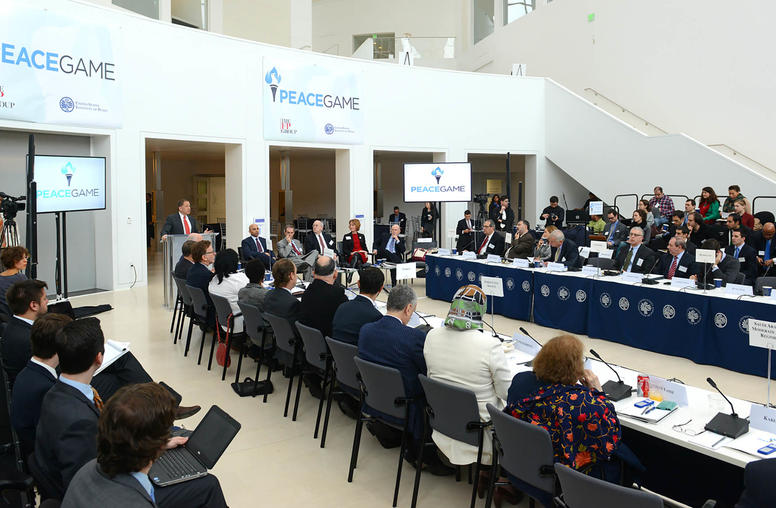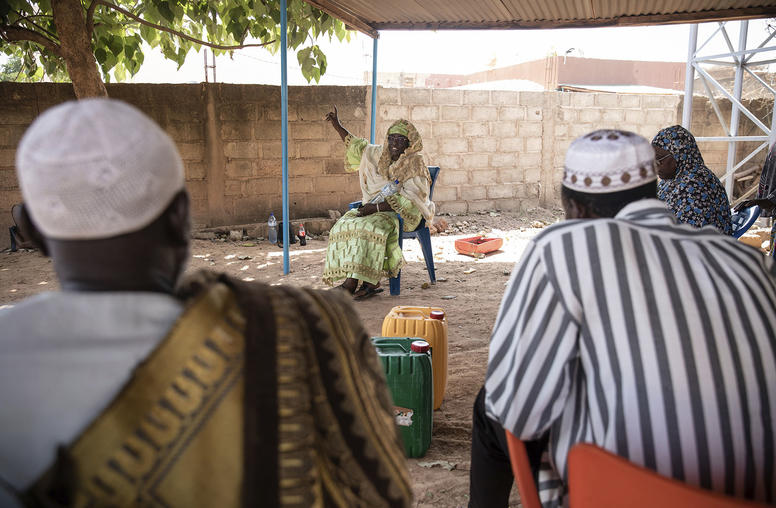Measuring Progress in Stabilizing War-Torn Societies
The published version of the MPICE Metrics Framework was released on July 9, 2010 at USIP. The three editors of the MPICE Framework, Col John Agoglia, Michael Dziedzic and Barbara Sotirin, along with John McNamara from S/CRS, discussed the design and use of MPICE. Read a summary of the event.
Event Summary
Amid fresh bipartisan criticism from lawmakers, in recent media reports, who said President Obama's strategy in Afghanistan is ill-defined and lacks goals that most Americans can understand, the United States Institute of Peace rolled out a powerful new publication intended to evaluate progression toward stability, reconstruction, and conflict transformation.
Called Measuring Progress in Conflict Environments (MPICE) A Metrics Framework, the 100-page document will enable national policymakers to obtain feedback on the impact and efficacy of their strategies, bring goals and resources into better balance, support realistic assessments of underlying sources of conflict, and enhance the prospects for achieving stabilization and lasting peace.
At a July 9 forum attended by more than 250 policymakers and others at USIP’s Washington, D.C., headquarters, authors fielded questions and discussed the genesis of MPICE. Complimentary copies of the publication were available to attendees.
USIP Senior Program Officer Michael Dziedzic, one of the editors of MPICE and moderator of the event, said the framework provides policymakers with a flexible tool that can be used to evaluate a comprehensive array of goals. “The beauty of MPICE is that it can be customized and tailored to each different conflict setting,” said Dziedzic.
Said Dr. Janine Davidson, Deputy Assistant Secretary of Defense for Plans: "The emphasis is on prevention and how can we prevent conflict. MPICE helps in the planning stage and allows for progress to be tracked over time.”
Dialing in from Afghanistan, Colonel John Agoglia, Director of the Counterinsurgency Training Center – Kabul, Afghanistan, said that had a document such as MPICE been in existence prior to 9/11, it would have identified measurable indicators of progress so policymakers would have a basis for analysis and planning.
He said that because of MPICE, people on the frontlines of the transition from war to peace will be prepared to identify and articulate problems that our intervention strategies face.
“The system isn’t perfect, but it provides all the interagency players a perspective into the process. It looks through the lens of stability and accentuates what we have in common," Agoglia said.
Panelist John McNamara, Director of the Office of Planning in the State Department's Office of the Coordinator for Reconstruction and Stabilization, reiterated the colonel’s remarks by adding that just because we have a metrics system in place doesn’t guarantee a stable society, but it provides a means of making necessary mid-course corrections.
The MPICE Framework was developed in a collaborative effort by USIP, the Department of State, the Office of the Secretary of Defense, U.S. Agency for International Development, the U.S. Army Corps of Engineers, and the U.S. Army Peacekeeping and Stability Operations Institute.
The MPICE Framework builds on the strategy for conflict transformation developed in The Quest for Viable Peace, a groundbreaking publication that draws upon the firsthand Kosovo experience of the contributors - USIP's Michael Dziedzic, former U.N. official Jock Covey and former State Department official Leonard Hawley - to identify the concrete challenges and lay out the practical steps that must be taken to transform a society violent conflict into one where peace can eventually be self-sustaining.
MPICE also addresses the five end states of USIP’s “Framework for Success for Societies Emerging from Conflict,” a planning guide that focuses on stability and state-building operations and critical leadership responsibilities that are crucial to mission success. It is a companion to USIP’s “Guiding Principles for Stabilization and Reconstruction.” Lead writer Beth Ellen Cole, USIP's Director of Intergovernmental Affairs, produced this manual for U.S. government civilian planners and practitioners to provide a comprehensive set of shared principles for building sustainable peace in societies emerging from violent conflict.
“The framework will be as successful as the users intend it to be," said attendee Elton Skendaj, a Cornell University researcher and Woodrow Wilson International Center fellow.
Copies of the publication, edited by Barbara Sotirin, Deputy Director for Global Security Affairs, The Joint Staff; Dziedzic and Agoglia are available for a free download.



